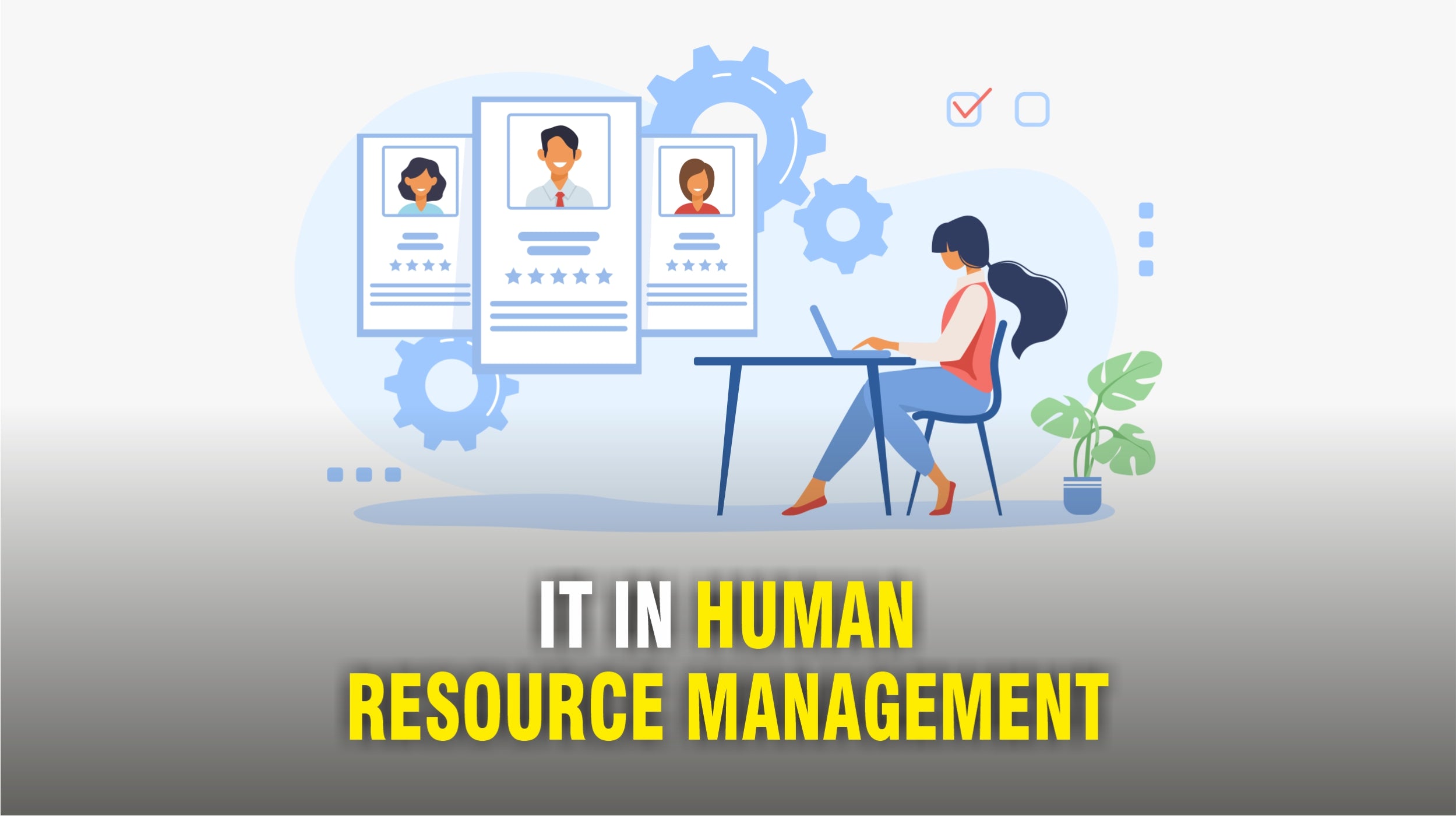
IT in Human Resource Management
by Vibrant Publishers
The need for technology in any organization should not be ignored. Although some fear that technology will promote the introduction of robots as a workforce, humans are still filling positions. Several organizations have admitted the importance of information technology (IT) as it aids in achieving goals near perfectly. Before now, the manual forms of operations made things difficult to accomplish. However, the basics of information technology, being automatic, present hefty and time-consuming tasks in an optimized and ordered manner.
It will conventionally take days, if not weeks, to sort out minor things like an updated regulatory policy for organizational compliance. However, the advent of Human Resource Management to technology could fix this within minutes of going online and retrieving updated regulatory policy data. Not only does the mode of retrieval appear easy, understanding the policy becomes easier as a human resource person may not have to contact the governing agencies in person for more enlightenment on specific policies.
With the introduction of IT in Human Resource Management, there is now a ‘responsibility shift.’ Human Resource Management barely has to flip through pages to review employee performance and also do not pass through hassles to obtain updated regulatory policies and principles, which are then integrated into the managerial system of an organization. Instead of all these, management can make strategic planning a focal point to keep competition alive and healthy.
Technology gives management a sense of swiftness. It keeps records of activities, and most advantageous, it makes them easily accessible. In every computer software, there is a ‘search’ feature provided. This feature makes it easier to quickly access a given file no matter its location. Sometimes it is necessary to instruct a computer on what result to present. Comparing this to a non-technology-based Human Resource Management, searching for a particular file would require flipping through pages which consumes time and energy.
Technology is very relevant, although it has a few glitches. Let’s glance through the central importance of technology in HRM that help to build and develop an organization towards success.
With speed, there is a rapid progression in the business. The speed here includes even the decision-making process. With technology, this is not an unsolvable difficulty. For instance, it provides room for a comprehensive analysis of the market speedily, thereby ensuring better risk management. It helps to stay abreast of market changes and to be able to formulate new strategies that will either increase the company’s competitive prowess or maintain its level.
This is an excerpt from the award-winning book, Human Resource Management Essentials You’ll Most Likely Be Asked by Jaquina Gilbert. The book provides an understanding of areas including performance management strategies, legal and regulatory compliance, payroll and compensation, technology in HRM , and others. It guides readers through HRM challenges and provides tools to address those challenges.
It will conventionally take days, if not weeks, to sort out minor things like an updated regulatory policy for organizational compliance. However, the advent of Human Resource Management to technology could fix this within minutes of going online and retrieving updated regulatory policy data. Not only does the mode of retrieval appear easy, understanding the policy becomes easier as a human resource person may not have to contact the governing agencies in person for more enlightenment on specific policies.
Information Technology and HRM:
Human Resource Management is tasked with responsibilities including employee development, recruitment of skilled employees, training, ensuring legal compliance, encouraging employees at work, formulating new policies, and more. All of these functions can now be rendered effortlessly with the aid of technology, which couples several predesigned instructions that make it easier for large tasks to be cut; needless to say, an aspect like payroll management in an organization. A larger percentage of organizations have switched to automatic or electronic payroll systems, which feature accuracy and transparency in accountability.With the introduction of IT in Human Resource Management, there is now a ‘responsibility shift.’ Human Resource Management barely has to flip through pages to review employee performance and also do not pass through hassles to obtain updated regulatory policies and principles, which are then integrated into the managerial system of an organization. Instead of all these, management can make strategic planning a focal point to keep competition alive and healthy.
Disadvantage of IT in HRM:
No study doubts the relevance of technology in Human Resource Management. However, there are doubts by a few studies on the adverse effects of technology. For instance, an organization of 80 employees is estimated to have at least one human resource person. Going by this estimate, in an organization of 150 employees, the number will increase to at least two human resource persons, and this will continue to increase. Usually, larger organizations should have a number of human resource persons enough to be called a team of strategists. However, technology cuts down the number by more than half as only a few persons can manage a large group with the proper technology. Here are the primary disadvantages of IT in HRM.
-
Risk of unemployment of HR professionals
-
A smaller number of human resource persons in an organization
-
Unexpected employee data breach/crash
-
Lazy mindedness of Human Resource Management
-
Over-dependence on machines
This extends to employees in an organization. The impact, just as in Human Resource Management, negatively affects employees. Rather than being judged by humans, employees risk being judged or assessed by machines, which will not be effective in the emotional aspect. Some of the notable effects on technology on employees include unemployment, lesser recognition, incorrect/undefining scores from machines, and a few more to mention. All in all, depending on how technology is managed in an organization, it makes an excellent addition to the company.
Importance of IT in HRM:
The mention of technology in Human Resource Management as a means for flexibility draws immediate attention. A difficult task can be tiring no matter the pay involved, but when the job is flexible, one would want to do more. This is the general benefit of technology in Human Resource Management that many human resource persons find alluring.Technology gives management a sense of swiftness. It keeps records of activities, and most advantageous, it makes them easily accessible. In every computer software, there is a ‘search’ feature provided. This feature makes it easier to quickly access a given file no matter its location. Sometimes it is necessary to instruct a computer on what result to present. Comparing this to a non-technology-based Human Resource Management, searching for a particular file would require flipping through pages which consumes time and energy.
Technology is very relevant, although it has a few glitches. Let’s glance through the central importance of technology in HRM that help to build and develop an organization towards success.
Absolute Focus on Management:
With technology, the focal point of Human Resource Management will be on strategic planning. Recall that the relevance of HR is essentially on management. However, it is often tricky as the HR department would have to be attentive to all aspects of the company at the same time. With technology, the workload is decreasing as Human Resource Management tends to focus more on strategic planning rather than an every-time problem-solving technique. Simply, this means that the managerial team of an organization will have to worry less about several other things and focus more on the technical area of development.
Automatically Grade Employees:
Performance scorecards are being introduced in several organizations as a means of monitoring and reviewing employee performance. HR sets up these systems and installs each on the appropriate systems in the organization. It could as well include employee work computers. Some companies anonymously install these to monitor the activities of employees in order to know who is being committed and who is not. This can also be termed an electronic appraisal.
Flexibility, Speed, and Accuracy:
This was earlier mentioned as the essential scope of technology. Human Resource Management has substantial flexibility. With technology, there is flexibility in all ramifications of management, including the thinking aspect. How is IT relevant in thinking? It merely provides easy access to the required stats/updates for effective decisions. Moreover, HR persons do not require file stacks to store data used in running the organization.With speed, there is a rapid progression in the business. The speed here includes even the decision-making process. With technology, this is not an unsolvable difficulty. For instance, it provides room for a comprehensive analysis of the market speedily, thereby ensuring better risk management. It helps to stay abreast of market changes and to be able to formulate new strategies that will either increase the company’s competitive prowess or maintain its level.
Accountability:
Operating on a manual standard is likely to make the accounting task difficult and incomprehensible. Managing payrolls in a non computerized way will lead to inaccurate records and will cause confusion. This is not the case when technology is involved because of the calculative ability is holds. A simple coding will be able to collect data, compile, sum up, and present a perfect result that can be accounted for. For this to be the case in an organization, such an organization must outsource for payroll systems like hiring an external payroll agency or professional to overlook the process of employee salaries and wages. IT goes as far as helping to determine the worth of a recruit in an organization correctly.This is an excerpt from the award-winning book, Human Resource Management Essentials You’ll Most Likely Be Asked by Jaquina Gilbert. The book provides an understanding of areas including performance management strategies, legal and regulatory compliance, payroll and compensation, technology in HRM , and others. It guides readers through HRM challenges and provides tools to address those challenges.
Share











